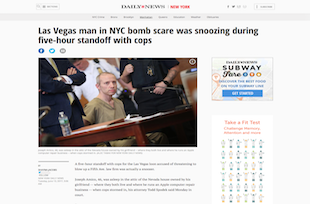New York Penal Law 135.60 Coercion in the Second Degree
New York Penal Law 135.60 Coercion in the Second Degree
Coercion in the second degree, is a class A misdemeanor in New York, carrying up to a year in jail. It involves forcing someone to do something against their will by instilling fear. Let’s break down the law, real cases, and what it means if you’re charged.
What is Coercion in the Second Degree?
According to New York Penal Law 135.60, coercion in the second degree involves compelling or inducing someone to:
- Engage in conduct they can legally abstain from
- Abstain from conduct they have a legal right to engage in
- Join a group or organization they can legally abstain from joining
This is done by instilling fear in the victim that there will be consequences if they don’t comply. Those consequences have to be something beyond just annoying the victim. It has to actually harm them in some way.
Some examples could include:
- Threatening to get someone fired from their job if they don’t do what you want
- Threatening to reveal embarrassing information about someone if they don’t pay you money
- Forcing someone to commit a crime by threatening them with physical harm
The key is that you have to be instilling real fear in the victim – just verbally pressuring someone may not rise to coercion. There has to be a sense you might actually follow through on the threat.
Comparison to Other Coercion Charges
Coercion in the second degree is a lower level charge than coercion in the first degree, a class D felony. The main difference is that first degree involves forcing someone to commit a felony themselves, cause physical injury, or damage property.
There is also a coercion in the third degree charge, a class A misdemeanor. This covers more minor threats like exposing a secret or annoying someone.
Penalties if Convicted
Since coercion in the second degree is a class A misdemeanor, potential penalties include:
- Up to 1 year in jail
- Up to 3 years probation
- Fines up to $1,000
Even though it’s a misdemeanor, a conviction will give you a permanent criminal record. This can impact your ability to get jobs, professional licenses, housing, and more in the future.
Real World Cases
To understand how coercion charges play out in the real world, let’s look at some examples from New York courts:
Forcing Someone to Commit a Crime
In People v. Greer, the defendant was charged with rape and claimed the victim consented [1]. But prosecutors introduced evidence he coerced the victim into having sex by threatening to falsely tell her parents she used drugs.
The court said such threats could establish coercion and rape, even if no physical force was used.
Threatening to Expose Affairs
In People v. Squillante, the defendant found out a man was having multiple affairs and threatened to tell his wife if he didn’t pay $10,000 [1]. This was ruled coercion in the second degree because it involved instilling fear to make the victim abstain from something he had a right to do.
Forcing an Abortion
In People v. Liberta, a husband forced his wife to get an abortion by threatening to end their marriage and deprive her of financial support she relied on [1]. The court said this physical and economic threat constituted coercion.
Defenses to Coercion
There are several defenses that could potentially beat a coercion charge, including:
- Lack of intent – You didn’t actually intend to instill fear or force the victim to act.
- No actual threat – What you said wasn’t an actual threat, just venting or joking around.
- Threat wasn’t serious – The threat was exaggerated and not realistic, so the victim had no real fear.
- Consent – The “victim” actually consented and wasn’t coerced into doing anything against their will.
An experienced New York criminal defense lawyer can evaluate the evidence and determine if any of these defenses could apply to your case.
Takeaways
- Coercion in the second degree is a class A misdemeanor in New York.
- It involves using threats or fear to force someone into actions against their will.
- Charges often arise from threats to expose secrets, cause financial harm, or instill fear of violence.
- Though a misdemeanor, a conviction can still carry jail time and a criminal record.
- Consult an attorney to discuss defenses that may apply to your specific case.
Having an experienced lawyer in your corner can make all the difference if you’re facing coercion charges. They can thoroughly investigate the allegations and build the strongest defense to avoid a conviction.














NJ CRIMINAL DEFENSE ATTORNEYS